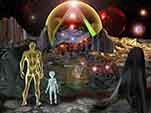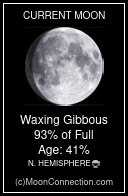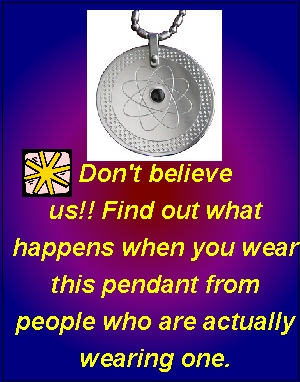http://www.yowusa.com/Archive/April2001/PAX1/pax1.htm
PAX TV Kicks U.S. Space
Command In The Slats
YOWUSA.COM, April 16, 2001
Marshall Masters
On Friday, March 20, 2001 the PAX Cable Television first aired its program, Is There a Doomsday Asteroid? Unlike other asteroid program, this one took the NASA and US Space Command down to the mat over a secretive government policy suppression policy that has angered independent astronomers since 1998. PAX’s gutsy message to the government was clear, the emperor has no clothes and we’re telling everyone who’ll sit still long enough to hear it. Well, somebody listened and the answer came two weeks later, buried at the bottom of a routine CNN science update web-published last Friday.
--------------------------------------------------------------------------------
Program Summary
The Is There a Doomsday Asteroid? programis a part of the Encounters With The Unexplained series. (Copies of the program can be purchased by calling 800-644-4441.)
The second half of this one-hour program zoomed in on the suppression policy NASA’s implemented back in 1998, which gives NASA the right to suppress new asteroid and comet sightings for a period of 72 hours.
This informative program featured notable authorities such as Dr. Duncan Steel, author of Target Earth, and Dr. Brian Marsden, Associate Director of the Smithsonian Astrophysics Observatories.
Also, the program offers a factual and secular style explanation of Bible verses related to possible impact scenarios, by Dr. Roy Knuteson, Emeritus Bible Professor at Northwestern College. For those with an interest in prophecy and impactors, this segment is uniquely superb.
--------------------------------------------------------------------------------
An Unpopular Policy With Astronomers
NASA’s official position on this suppression policy is that it gives them the exclusive ability to withhold critical sighting information from independent astronomers for a period of 72 hours, after which time NASA will release the information according to their own self-imposed rules.
Until 1998, the accepted practice amongst astronomers who spotted new asteroids and comets was to immediately publish their findings via the Internet, so other independent observers could make their own observations in a timely manner. For this reason, NASA’s 1998 suppression policy has angered astronomers because it suppresses vital sighting information during an optimal observation period.
The result of this policy is be summed up by Dr. Brian Marsden, who said on the program, “Quite frankly, I think NASA’s policy is dangerous.”
--------------------------------------------------------------------------------
The Emperor Has No Clothes
The program then drove to the heart of the NASA’s suppression policy, which is where I came in as one of those being interviewed.
When I was videotaped for the program, they asked me about this policy and what I essentially said was, that it is used by NASA, to clear the release of this information with those who fund and control NASA.
What surprised me when I viewed the program was the person answering my assertion. It was none other than Brig. Gen. Simon P. Worden, USAF, Vice Director of Operations, U.S. Space Command. (Now why would he be the one to answer that assertion?)
Worden’s reply boiled down to “in the long run it makes no sense to withhold this information.” Uh excuse us for asking, but does “long run” mean 72-hours, or more?
What also surprised me is that PAX openly linked the relationship (and pecking order) between the U.S. Space Command and NASA. Several cable networks have aired asteroid programs, but this was the first one that had the chutzpah to kick the U.S. Space Command in the slats.
Given that the U.S. Space Command admitted more than once on the program that it does not possess the ability to stop and an impactor, this NASA linkage by PAX must have been somewhat embarrassing.
Hey fellows, we appreciate the diligent work and all the money you’re spending identifying space junk in orbit around our planet, but an impactor that is 50 meters in diameter or more can do a lot more damage than a spend rocket booster. Can we get focused on what really matters here?
--------------------------------------------------------------------------------
Government Launches a Trial Balloon
No doubt, somebody with a little juice watched this program and picked up a phone and suddenly, the insufferably slow and grinding wheels of government got a bit of grease for a worthwhile project that has no doubt been languishing in the bowels of government way too long.
So, action is taken and the following trial balloon is floated past the science desk at CNN.
CNN.COM, April 13, 2001
In Brief: Jupiter unleashes mysterious bright flash
NASA expands search for killer asteroids
(CNN) -- A powerful new camera will give a boost to NASA's search for larger asteroids orbiting Earth, the space agency said. The camera was installed this week for NASA's Near Earth Asteroid Tracking (NEAT) system on the Oschin telescope at the Palomar Observatory, near San Diego, California.
It can provide three times more data and survey 1.5 times more sky than the NEAT camera currently operating at the Maui Space Surveillance Site's telescope in Hawaii.
"The new camera has the flexibility to do a wide and shallow sky survey, or one not-so-wide but deeper," said Steven Pravdo, NEAT project manager at NASA's Jet Propulsion Laboratory in Pasadena, California.
Because the whole control system on the Oschin telescope was upgraded to a computer-controlled system, the NEAT team can operate the telescope remotely from their offices at JPL.
There are some interesting points to keep in mind about this trial balloon.
It appears at the bottom of a CNN update page. There are no direct links to the announcement, and does not have a page anchor so it can be linked directly. Was it really that uninteresting?
The title begins with an attribute to NASA, which co-sponsors the NEAT program with JPL. However, when I checked NASA’s web site, there was no mention of this new telescope. Again, was it really that uninteresting?
What many people do not realize is that the relationship between NASA and JPL is more like a bureaucratic shotgun wedding. NASA is the science-oriented side of the marriage, and JPL is the fair-haired boy of the defense department with a built-in prejudice against manned missions.
--------------------------------------------------------------------------------
Where’s The Beef?
Now given all that, is relationship between NASA and JPL the point here, or even NASA’s suppression policy for that matter? No!
Once a governmental agency gives itself power over certain situation, taking that power back is like pulling a chicken out of an alligator’s jaws. Simply put, NASA will continue to suppress sighting information because it cannot afford to have its funding threatened.
However, what did happen here is that funding was mysteriously discovered for the Oschin telescope two weeks after PAX ran its program. Is there a direct link, or a quid pro-quo? Does it matter?
No it doesn’t because what really matters is that PAX put the spotlight on the government and it was embarrassing for them. Not the allegations. Governments eat gripes like these for breakfast, and wash it down with a healthy dose of spin.
Rather, what embarrassed them was their own lame duck “we’re powerless to do anything about this” answers, along with the truth that they are suppressing critical sighting knowledge from independent astronomers worldwide.
--------------------------------------------------------------------------------
Why We Need To Keep Raising
Those Flags of Discontent
The threat of potential impactors is not a matter of national defense. It is a mater of species defense and Dr. Brian Marsden is absolutely spot-on when he says, “Quite frankly, I think NASA’s policy is dangerous.”
PAX hit a nerve with this and someone funded a new telescope to find asteroid and comets. That is good news for mankind. Really good news! But, knowledge that is suppressed for 72 hours is knowledge denied.
--------------------------------------------------------------------------------
Public Awareness Is Growing
This Sunday, CBS aired the movie Deep Impact, which followed a week of asteroid impact programs on various cable channels. People are becoming aware. The threat of impact is weaving its way through the zeitgeist of our society.
The zeitgeist is that gauzy web of common knowledge that we can never isolate in the specific but understand in the general, when we say things like “everyone knows that…” We’re beginning to get the picture that we’re at risk but that we’re also the first species to ever walk this planet with the ability to do something more about it than to stick our heads in the sand.
Other world governments understand this, and to their credit they are taking a more open approach to the threat of impacts and with good reason. We are in the midst of a solar maximum when the threat of a Tunguska-class impact is at its highest.
Unfortunately, America with its tremendous resources still considers the threat of impacts to be the sole domain of out-of-touch policy wonks in Washington. Consequently, getting their attention with reasonable pleas has proven utterly fruitless.
However, what the PAX program proved is that the squeaky wheel will get the grease if it squeaks loud enough. And, if enough wheels begin to squeak, perhaps we’ll get NASA (and those who fund and control NASA) to repeal their dangerous policy of suppressing sightings for 72 hours.
--------------------------------------------------------------------------------
Share Your Comments About
This Article on a YOWUSA
Special Interest Group (SIG)
Recommended SIGs
Space, SpaceGov, and Hit List






































